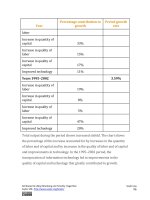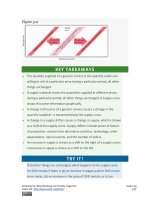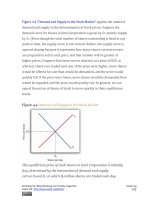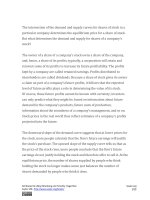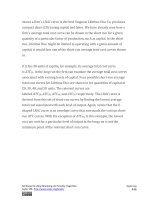Authors libby rittenberg 873
Bạn đang xem bản rút gọn của tài liệu. Xem và tải ngay bản đầy đủ của tài liệu tại đây (400.41 KB, 1 trang )
unused to the demands of a competitive, unprotected, and unregulated
environment, went bankrupt or were taken over by other airlines. Large
airlines abandoned service to small and midsized cities, and although most
of these routes were picked up by smaller regional airlines, some
consumers complained about inadequate service. Nevertheless, the more
competitive airline system today is probably an improvement over the
highly regulated industry that existed in the 1970s. It is certainly
cheaper.Table 16.3 "Improvement in Consumer Welfare from
Deregulation" suggests that the improvements in consumer welfare from
deregulation through the 1990s have been quite substantial across a broad
spectrum of industries that have been deregulated.
Table 16.3 Improvement in Consumer Welfare from Deregulation
Industry
Improvements
Airlines
Average fares are roughly 33% lower in real terms since
deregulation, and service frequently has improved
significantly.
Less-thantruckload
trucking
Average rates per vehicle mile have declined at least 35%
in real terms since deregulation, and service times have
improved significantly.
Truckload
trucking
Average rates per vehicle mile have declined by at least
75% in real terms since deregulation, and service times
have improved significantly.
Railroads
Average rates per ton-mile have declined more than 50% in
real terms since deregulation, and average transit time has
fallen more than 20%.
Banking
Consumers have benefited from higher interest rates on
deposits, from better opportunities to manage risk, and
from more banking offices and automated teller machines.
Natural gas
Average prices for residential customers have declined at
Attributed to Libby Rittenberg and Timothy Tregarthen
Saylor URL: />
Saylor.org
873
